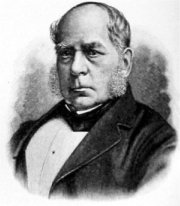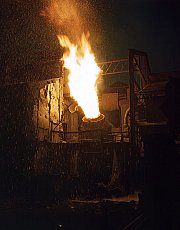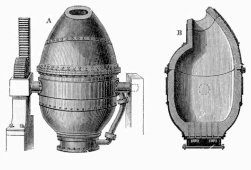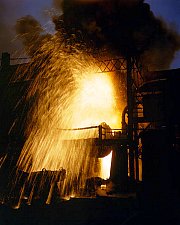|
"The Steel Industry" Born In The 1850's The Father... Sir Henry Bessemer.
The Steel Industry by definition is steel manufacturing on the largest scale. It of course is not just the common person in his shop making a couple hangers for his wife’s plants. That may be just as important to him, depending on the insistence of his wife. Still, it doesn't quite match up to the importance the steel industry has played throughout the entire world. Steel is a huge necessity to the world’s industrial economy. If you look around, you will see that if industry does not play a key role in a countries economy, then that economy is dismal to say the least. Steel however was an expensive commodity to produce before the 1850’s. It was mainly used in ancient weaponry, and where otherwise necessary. "Sir Henry Bessemer" 
I want to focus for a minute on the person that made it possible for the world to be able to produce steel in bulk. He is the reason that the steel industry was able to get off the ground, and if he were alive, we would all owe him a Christmas card every year. His name was Sir Henry Bessemer.
Henry Bessemer was born in Hertfordshire, England on January 19, 1813. He was the world famous engineer that was known for his development of the Bessemer process for the manufacturing of steel. When he was a younger man, and working with the Paris Mint, he created a machine to make medallions that could produce steel dies for larger models. When he was 26, he became a member of the French Academy of Science for improving the optical microscope. The French Revolution forced him back to Britain where he invented the process for making gold chains. This was a highly successful invention, and helped his finances a bit. However, what really managed to give his wallet a proper thickness for his talents, was a series of six steam-powered machines that made fine brass powder used as gold paint. Gold paint was already around but only through one source. He decided to capitalize on it and simply made it better. With his fortune in hand, he was able to pursue other inventions that he had swimming in his head and needed the money to move forward on. He was about to focus on the steel industry.

The Bessemer process was a solution to this problem, making a cheaper way to produce steel by not having to use fuel to fan the fire, but by using oxygen to fan it instead. He had patented the idea to just a few companies who had a great deal of trouble putting out good quality steel. The idea was the cure, but the cure was not yet perfected. Finally, a man by the name of Forest of Dean showed that adding an exact amount of carbon and manganese, in the form of specular pig iron, improved the quality of the finished product, by increasing its malleability. He Who Laughs Last…
At first you have to admit, it was a bit shaky, but when the steel traders were buying steel from Henry Bessemer & Co. at $20 less per ton, the other steel manufacturers decided they better get involved and threw millions of pounds of sterling silver in Sir Henry’s direction. Bessemer was a prolific inventor and held at least 129 patents, from 1838 to 1883. They were based in the manufacturing of iron, steel, glass, sugar, and cannons for the most part. Bessemer also obtained a patent in 1857 for the casting of metal between rollers used today in the continuous casting processes, and Bessemer's idea has been used in the direct continuous casting of steel strip. "In Conclusion" You may want to read up on Sir Henry in his autobiography. It describes in detail his inventions and his journeys to get there. Before he died in March of 1898, he was knighted for his contributions to science. In that same year, 1879, he was made a fellow of the Royal Society. The Bessemer converter is available for public viewing at the Sheffield's Kelham Island Industrial Heritage Museum if you ever get a chance to visit. If you are out there listening Sir Henry, the steel industry of the world owes you a great deal of thanks. We all appreciate you and all your work even if we don't show it sometimes. |







 As we have already stated, steel was extremely expensive to make so it was not done in bulk fashion. The world was relying on cast iron and wrought iron to support their railways and their bridges prior to the Bessemer process. That problem was causing many tragedies such as railroads and bridges collapsing. It was a nightmare in and of itself.
As we have already stated, steel was extremely expensive to make so it was not done in bulk fashion. The world was relying on cast iron and wrought iron to support their railways and their bridges prior to the Bessemer process. That problem was causing many tragedies such as railroads and bridges collapsing. It was a nightmare in and of itself. There were quite a few steel manufacturers around at the time, but they all scoffed at using the new and now improved Bessemer process.
There were quite a few steel manufacturers around at the time, but they all scoffed at using the new and now improved Bessemer process. 